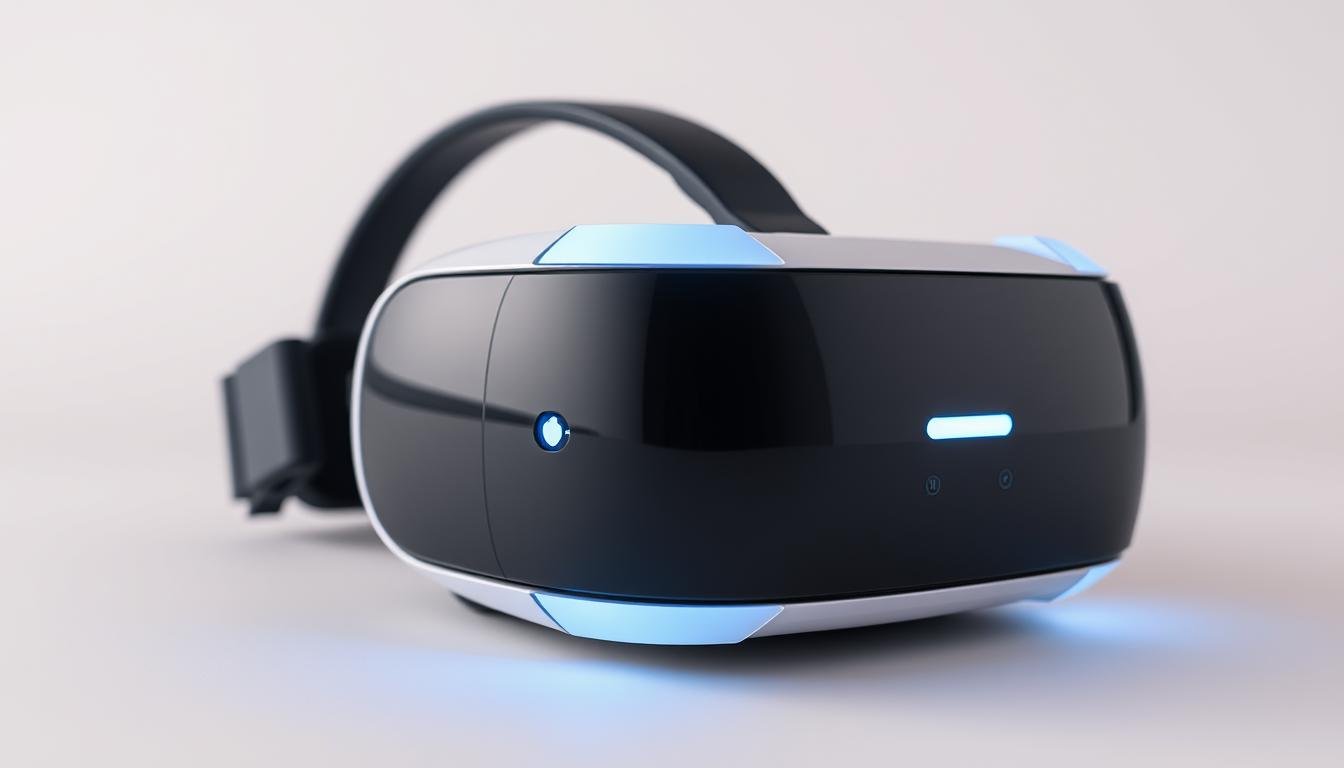Did you know that over 171 million people worldwide use virtual reality technology? If you’re thinking about jumping into this immersive world, getting a high-quality headset is essential. Whether you’re a gamer, a tech enthusiast, or someone exploring new experiences, the right device can make all the difference.
This guide will walk you through the process of selecting the perfect headset for your needs. From compatibility with devices like the Pimax Crystal for PCVR or PlayStation VR for consoles, to factors like display quality, comfort, and tracking technology, we’ve got you covered. We’ll also discuss technical specifications, such as resolution and refresh rates, to ensure you get the best experience.
Our recommendations are based on thorough testing and real-world examples from trusted brands like Meta, HTC, and Apple. By the end of this guide, you’ll have all the knowledge you need to make an informed decision and dive into the world of virtual reality with confidence.
Key Takeaways
- Selecting a high-quality headset is crucial for an immersive experience.
- Compatibility with your device, whether PC or console, is essential.
- Display quality and refresh rates significantly impact your experience.
- Comfort and tracking technology are key factors to consider.
- This guide is based on real-world testing from top brands.
Understanding VR Technology and Compatibility
Compatibility is the cornerstone of a seamless virtual reality experience. Before investing in a headset, it’s crucial to understand which devices it supports. Whether you’re using a computer, console, or standalone system, the right choice ensures smooth performance and maximum enjoyment.
Exploring Compatible Devices
VR headsets come in three main types: PC-based, console-based, and standalone. PC-based headsets, like the Pimax Crystal, require a powerful computer to function. These devices often offer the highest quality visuals and advanced features. Console-based options, such as the PlayStation VR, are designed specifically for gaming systems like the PS5. Standalone headsets, like the Meta Quest 3S, operate independently, making them a versatile choice for many users.
Each type has its strengths. PC-based headsets deliver unmatched performance, while standalone models provide convenience and portability. Console-based headsets are ideal for gamers who want a seamless integration with their existing setup.
Platform-Specific Considerations
Not all headsets work with every platform. For example, the PlayStation VR2 is optimised for the PS5, offering features like haptic feedback and eye tracking. On the other hand, the Meta Quest 3S supports both standalone and PC-based experiences, giving users more flexibility.
To ensure your computer is VR-ready, manufacturers like Meta and HTC offer compatibility tools. These tools check your system’s specifications, such as GPU and RAM, to confirm it can handle the demands of virtual reality. This step is essential to avoid performance issues and ensure a smooth experience.
| Headset | Compatible Devices | Key Features |
|---|---|---|
| Pimax Crystal | PC | High resolution, advanced tracking |
| PlayStation VR2 | PS5 | Eye tracking, haptic feedback |
| Meta Quest 3S | Standalone, PC | Portable, 6DoF tracking |
Checking compatibility is the first step in choosing the right headset. By understanding your device’s requirements and the features each headset offers, you can make an informed decision that enhances your virtual reality journey.
Evaluating Display and Image Quality
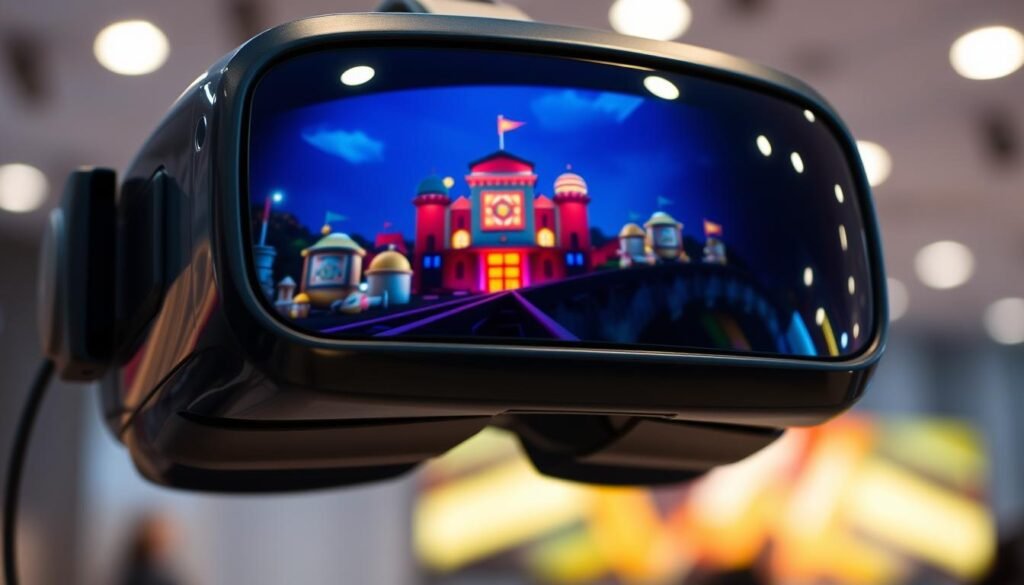
The quality of your virtual reality experience hinges on the display and image clarity of your headset. A sharp, immersive display ensures you feel fully engaged in the virtual world. Poor visuals, on the other hand, can break immersion and lead to discomfort.
When evaluating a headset, consider these key factors: resolution, refresh rate, Pixels-Per-Degree (PPD), and Field of View (FOV). Each plays a vital role in delivering a seamless and enjoyable experience.
Resolution Requirements and Refresh Rates
Resolution determines how sharp and detailed the images appear. For a truly immersive experience, look for a headset with at least 1080p resolution. Higher resolutions, like those found in the Meta Quest 3, provide even greater clarity.
Refresh rate is equally important. A minimum of 90Hz ensures smooth motion and reduces latency. This is crucial for fast-paced games or dynamic content, where even slight delays can disrupt immersion.
Pixels-Per-Degree (PPD) and Field of View
PPD measures the density of pixels within your field of vision. A higher PPD, ideally 20 or more, results in sharper images and reduces the “screen door effect.” This is particularly noticeable in headsets like the HTC Vive Pro 2, which excels in image clarity.
Field of View (FOV) expands your view of the virtual world. An FOV of 95° or higher enhances immersion by making the environment feel more expansive. This is especially beneficial for gaming or exploring detailed virtual landscapes.
For a deeper dive into the best headsets available, check out this comprehensive list of top VR headsets. It highlights options that excel in display quality and overall performance.
Determining Comfort and Ergonomics
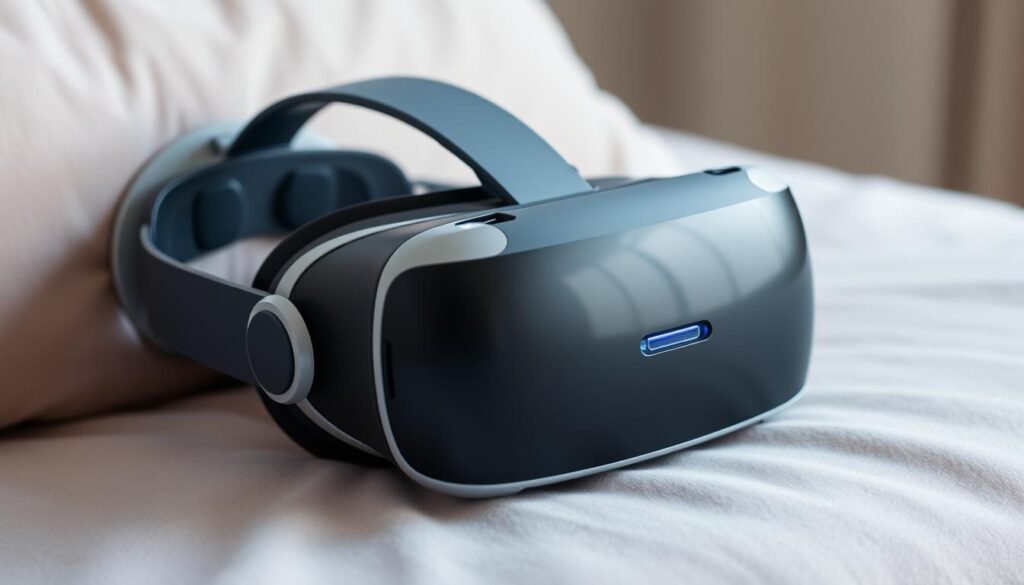
Comfort is a critical factor when selecting a headset for extended use. A poorly designed device can lead to discomfort, fatigue, and even headaches, detracting from your immersive experience. To ensure long-term enjoyment, focus on features like adjustable straps, cushioned padding, and lightweight construction.
Adjustable Straps and Padding Design
Adjustable straps are essential for achieving a secure fit. Look for headsets with flexible straps that can be tightened or loosened to suit your head shape. This ensures the device stays in place during active use, whether you’re gaming or exploring virtual worlds.
Padded designs add an extra layer of comfort. Soft, breathable materials reduce pressure on your face and head, making extended sessions more enjoyable. Models like the Meta Quest 3 excel in this area, offering plush padding that adapts to various face shapes.
Weight and Long-Term Wearability
The weight of a headset plays a significant role in its comfort. Heavy devices can strain your neck and shoulders over time, while lightweight options are easier to wear for extended periods. For example, the HTC Vive Pro 2 balances durability with a manageable weight, ensuring you stay comfortable during long sessions.
Ergonomic design is another key consideration. A well-balanced headset distributes weight evenly, reducing pressure points. This is particularly important for standalone devices like the Meta Quest 3S, which are designed for portability and ease of use.
| Headset | Weight | Comfort Features |
|---|---|---|
| Meta Quest 3 | 500g | Adjustable straps, cushioned padding |
| HTC Vive Pro 2 | 650g | Balanced design, breathable materials |
| Pimax Crystal | 700g | Customisable fit, lightweight construction |
When trying on a headset, pay attention to how it feels on your head and face. A secure yet comfortable fit is crucial for an enjoyable experience. Remember, long-term wearability should never be overlooked, as it directly impacts your overall satisfaction with the device.
How to Choose Your First VR Headset
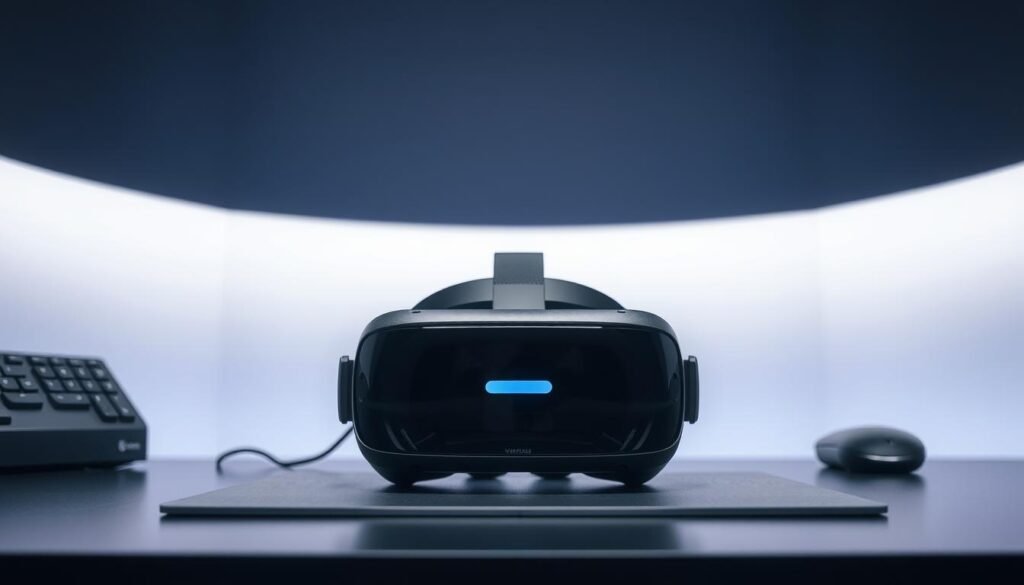
Selecting the right headset involves evaluating several key features. From compatibility to comfort, each aspect plays a vital role in enhancing your experience. By understanding these specifications, you can make an informed decision that suits your needs.
Compatibility and Device Integration
Compatibility is the foundation of a seamless experience. Ensure the headset works with your preferred device, whether it’s a PC, console, or standalone system. For example, the Meta Quest 3S supports both standalone and PC-based modes, offering flexibility for different users.
Display Quality and Visual Performance
Display quality significantly impacts your immersion. Look for a headset with a high resolution, such as the Meta Quest 3, which offers 2064 x 2208 pixels per eye. A refresh rate of at least 90Hz ensures smooth motion, especially in fast-paced games.
Comfort and Ergonomics
Comfort is essential for extended use. Adjustable straps and cushioned padding, like those on the Meta Quest 3, ensure a secure and comfortable fit. Lightweight designs reduce strain, making long sessions more enjoyable.
Tracking Technology and Controller Performance
Tracking technology enhances your experience by accurately capturing your movements. The Meta Quest 3S uses 6DoF tracking, providing precise control in games. Controllers with responsive feedback further elevate your gaming experience.
| Feature | Importance | Example |
|---|---|---|
| Compatibility | Ensures smooth performance | Meta Quest 3S |
| Display Quality | Enhances immersion | Meta Quest 3 |
| Comfort | Reduces fatigue | Adjustable straps |
| Tracking | Improves accuracy | 6DoF tracking |
By assessing these essential features, you can compare options effectively and choose the headset that best fits your needs. Whether you’re gaming or exploring virtual worlds, the right combination of features ensures a seamless and enjoyable experience.
Assessing Content Availability and App Support
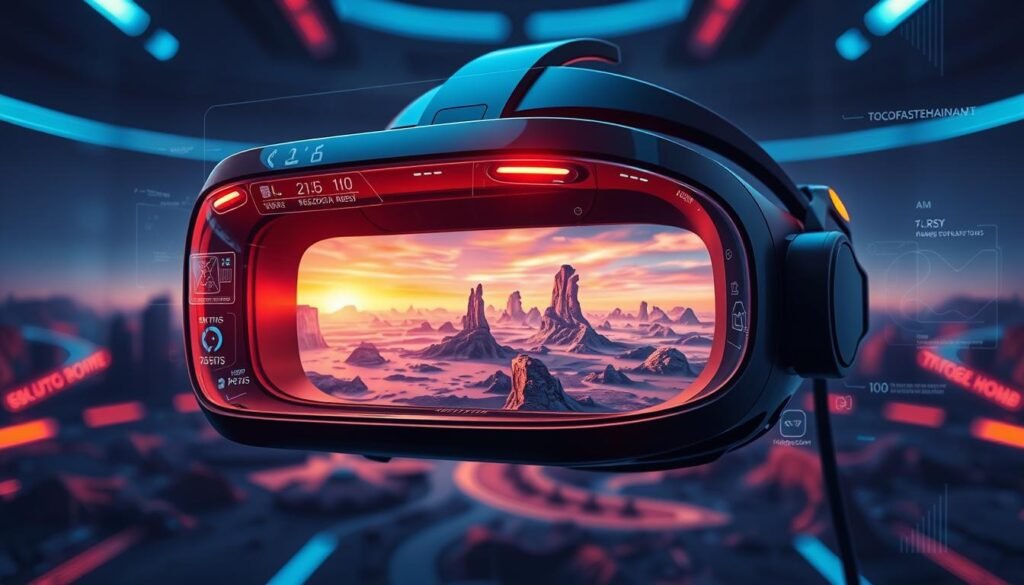
The variety of content available can make or break your virtual reality journey. A headset’s appeal isn’t just about hardware; it’s also about the experiences it can deliver. Whether you’re into gaming, social interactions, or creative exploration, the right library of apps and games is essential.
An expansive game and app library ensures you’ll never run out of things to do. Popular titles like Beat Saber and VR Chat have become staples in the VR community, offering immersive and engaging experiences. These games are optimised for headsets like the Meta Quest 3, ensuring smooth performance and maximum enjoyment.
Diverse VR Experiences and Game Collections
Developer support plays a crucial role in keeping content fresh and exciting. Regular updates and new releases keep the ecosystem vibrant, ensuring your headset remains relevant. For example, the Meta Quest platform frequently adds new games and apps, making it a top choice for many users.
When evaluating a headset, consider its ecosystem’s variety. Does it offer enough options to match your interests? Cross-platform availability is another factor to consider. Some games and apps are exclusive to certain headsets, while others are accessible across multiple platforms. This can significantly influence your decision.
| Headset | Popular Games | Key Features |
|---|---|---|
| Meta Quest 3 | Beat Saber, VR Chat | Standalone, 6DoF tracking |
| PlayStation VR2 | Resident Evil 4, Horizon Call of the Mountain | Eye tracking, haptic feedback |
| HTC Vive Pro 2 | Half-Life: Alyx, Skyrim VR | High resolution, PC-based |
The richness of content can greatly boost a headset’s value to you. For a deeper dive into compatible options, check out this comprehensive guide. It highlights headsets that excel in both hardware and content availability, ensuring you make an informed choice.
Exploring Advanced Features and Future Trends
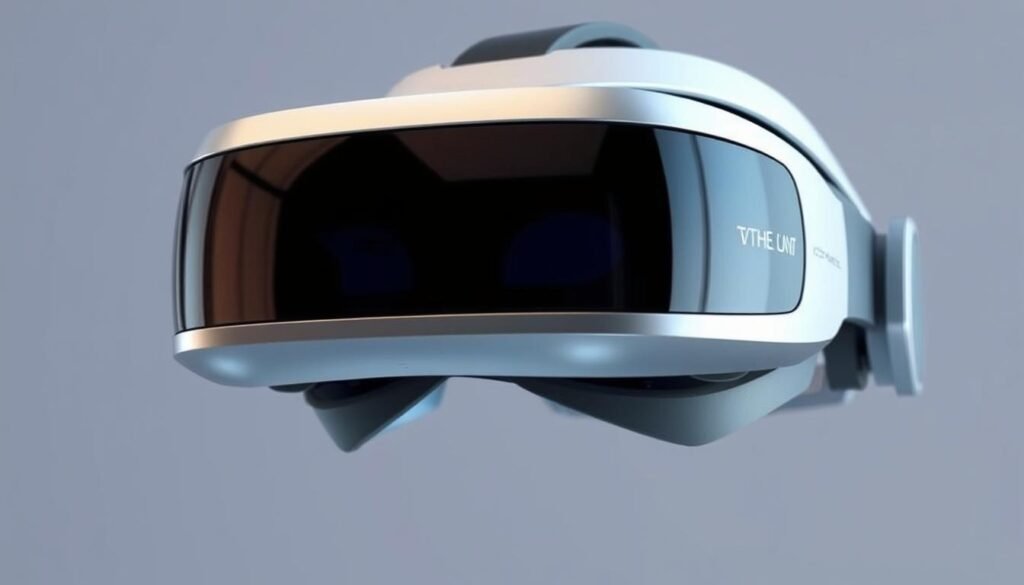
The future of virtual reality is evolving rapidly, blending advanced features with immersive experiences. As technology progresses, headsets are becoming more sophisticated, offering capabilities that go beyond traditional VR. From mixed reality integrations to groundbreaking innovations, the next generation of devices promises to redefine how we interact with digital worlds.
Mixed Reality Capabilities and AR Integrations
Mixed reality (MR) is bridging the gap between virtual and augmented reality, creating seamless experiences. Devices like the Apple Vision Pro and Samsung’s Project Moohan are leading the charge, combining VR with AR functionalities. These headsets allow users to interact with both digital and physical environments simultaneously, enhancing both gaming and professional applications.
For instance, the Meta Quest 3 supports MR features, enabling users to overlay virtual objects onto their real-world surroundings. This integration is particularly useful for training simulations, remote collaboration, and immersive gaming experiences.
Upcoming Innovations in VR Headsets
The VR landscape is set to witness significant advancements in the coming years. Apple’s Vision Pro introduces spatial computing, offering a more intuitive way to interact with digital content. Meanwhile, Samsung’s upcoming headset aims to deliver cutting-edge performance with enhanced display quality and comfort.
Android XR is another exciting development, designed to integrate mobile smartphones with VR/AR devices. This innovation could make VR more accessible, allowing users to leverage their existing devices for immersive experiences.
| Feature | Current Headsets | Future Innovations |
|---|---|---|
| Mixed Reality | Meta Quest 3 | Apple Vision Pro |
| Display Quality | HTC Vive Pro 2 | Samsung Project Moohan |
| Accessibility | Standalone VR | Android XR Integration |
As these innovations unfold, the way we experience VR will continue to evolve. For a deeper dive into these trends, explore this comprehensive guide on the transformative impact of virtual reality across industries.
Conclusion
Your journey into virtual worlds starts with selecting the perfect device. Compatibility ensures your headset works seamlessly with your preferred platform, whether it’s a PC, console, or standalone system. Display quality, including resolution and refresh rate, plays a crucial role in delivering sharp, immersive visuals.
Comfort is equally important for extended use. Adjustable straps and lightweight designs, like those on the Quest series, reduce fatigue during long sessions. Tracking technology enhances your experience, providing precise control in games and applications.
Content availability is another key factor. A diverse library of apps and games ensures endless entertainment and exploration. Finally, keeping an eye on future trends, like mixed reality and advanced features, can future-proof your investment.
By comparing models like the Quest, HTC Vive, and others, you can make an informed decision. A well-chosen headset guarantees a truly immersive and enjoyable virtual experience.
FAQ
What devices are compatible with VR headsets?
How important is display quality in a VR headset?
What makes a VR headset comfortable to wear?
What is the difference between inside-out and outside-in tracking?
How do I choose the right VR headset for gaming?
Are there VR headsets with mixed reality capabilities?
What should I consider regarding app support and content availability?
Are there upcoming innovations in VR technology?
Source Links
- Parent’s guide to VR headsets and VR games for kids
- How to Connect Your PlayStation VR2 Headset to a PC: Step-by-Step Guide – IGN
- The Best Budget VR Headsets – IGN
- Manual: VR and MR development in Unity
- Design and usability evaluation of an immersive virtual reality mirrored hand system for upper limb stroke rehabilitation – Scientific Reports
- Reliability and validity of a self-developed virtual reality-based test battery for assessing motor skills in sports performance – Scientific Reports
- iVRPM: Conceptual Proposal of an Immersive Virtual Reality Pedagogical Model
- Ergonomic Assessment – AusRehab
- The Impact of Spatial Dimensions, Location, Luminance, and Gender Differences on Visual Search Efficiency in Three-Dimensional Space
- PlayStation VR2 Hand Tracking Review: How Does It Compare To Quest 3’s?
- How Skydance devs straddled the massive performance gap between Meta Quest and PSVR 2 | Shawn Kittelsen interview
- Why Was The Meta Quest Pro Discontinued? – SlashGear
- Meta Quest 3 vs. 3S: Which VR Headset Is Right for You?
- HTC Vive Focus Vision Showcases the Problems of VR Headsets That Aren’t the Meta Quest
- Virtual Reality Applications in the Real World
- Frontiers | Practical considerations of clinical XR (AR/VR) deployments
- Apple eyes AI push on the Vision Pro. What it needs is a health pivot
- Why enterprises are choosing smart glasses that talk — not overwhelm
- Future of In-Flight Entertainment Trends to Watch 2025
- How the NHS is approaching the future of XR and metaverse technologies
- Meta Quest 3 vs. 3S: Which VR Headset Is Right for You?
- Why Use Virtual Reality for Training? Key Insights and Advantages – Mazerspace
- Virtual Reality Interventions and Chronic Pain: Scoping Review
